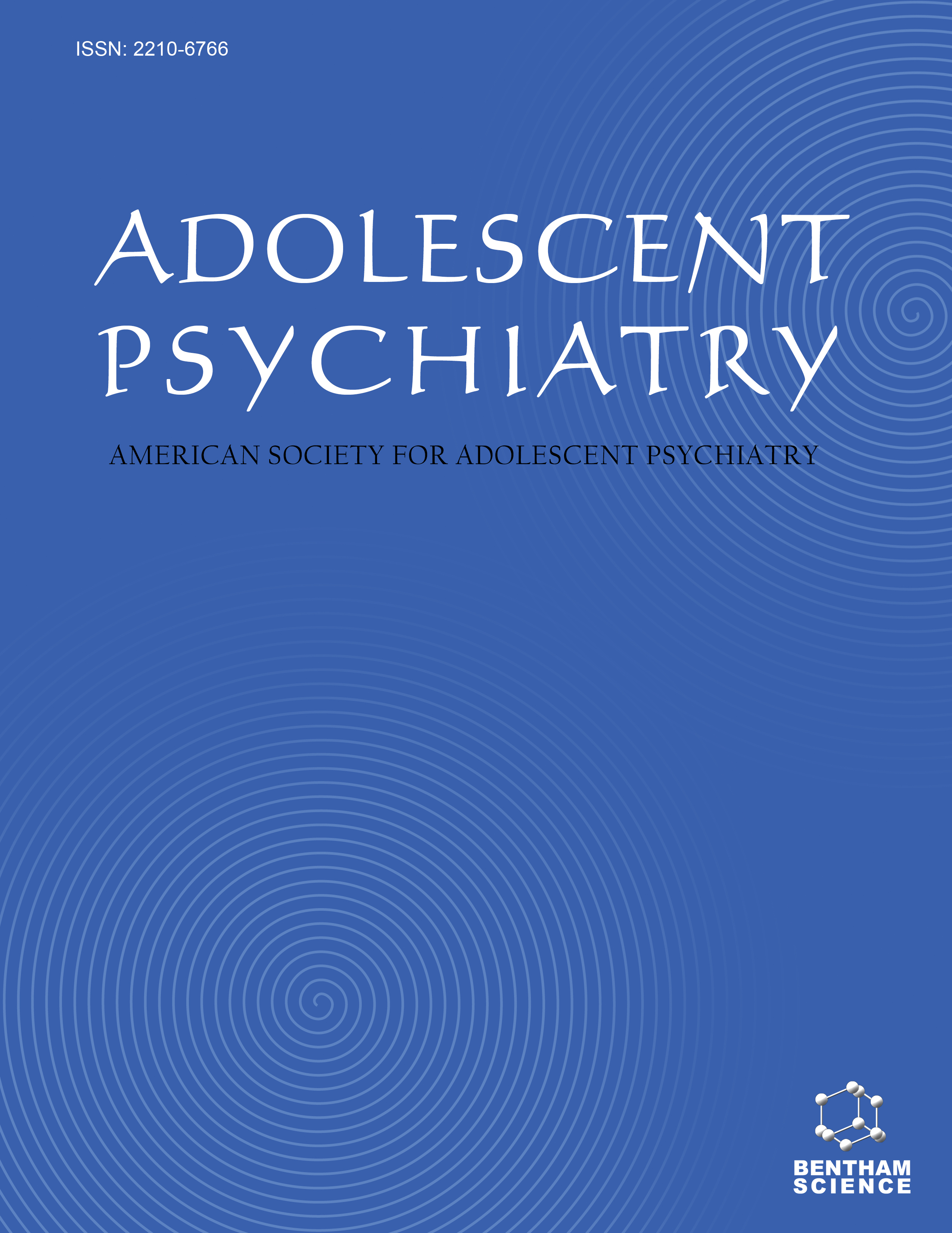- Home
- A-Z Publications
- Adolescent Psychiatry
- Previous Issues
- Volume 2, Issue 2, 2012
Adolescent Psychiatry - Volume 2, Issue 2, 2012
Volume 2, Issue 2, 2012
-
-
Early Detection, Intervention, and Prevention of Psychosis Program: Rationale, Design, and Sample Description
More LessObjective: To describe the rationale, design, intervention, and sample characteristics of the Early Detection, Intervention, and Prevention of Psychosis Program (EDIPPP), a multi-site study of the effectiveness of Family-Aided Assertive Community Treatment (FACT) in preventing the onset of psychosis in a nationally representative sample of atrisk young people. Methods: Young people (age 12 - 25) and their families are ass Read More
-
-
-
Early Intervention in Psychosis: Rationale, Results and Implications for Treatment of Adolescents at Risk
More LessAuthors: William R. McFarlane, Barbara Cornblatt and Cameron S. CarterThis article reviews the theoretical, conceptual and empirical background for the current and growing research on early identification and early intervention to obtain improved outcomes in psychotic disorders. The goal is to prevent episodes of psychosis and the functional disability that accompanies them. Described are the studies linking duration of untreated psychosis and later outcomes, the precedents for psychosis, Read More
-
-
-
A Community Outreach and Education Model for Early Identification of Mental Illness in Young People
More LessAuthors: Anita Ruff, William R. McFarlane, Donna Downing, William Cook and Kristen WoodberryObjective: The Portland [Maine] Identification and Early Referral (PIER) program was established in 2000 as a prevention system for identifying and treating adolescents and young adults at high risk of an initial psychotic episode. Community outreach and education to targeted groups was the primary method for identification. Methods: Community outreach and education is defined as any activity designed to inform key audien Read More
-
-
-
In the First Person: A Window into the Experience of Early Psychosis and Recovery
More LessThis article contains first person accounts in narrative and visual form created by clients and family members who have participated in the Early Detection and Intervention for the Prevention of Psychosis Program (EDIPPP). By the time most individuals join EDIPPP they have been experiencing a confusing constellation of thought and behavior changes. For most, EDIPPP signifies the next step in a journey of trying to reclaim a se Read More
-
-
-
The Assessment of Attenuated Psychotic Symptoms in Adolescents: Concepts, Practical Approaches and Prediction of Risk
More LessAuthors: Rahel Pearson, Barbara Stuart and Rachel LoewyEarly detection of those at risk for developing psychotic disorders is a growing field that creates an opportunity for intervention early in the course of illness, with potential for improved prognosis. In the last two decades, a number of instruments aimed at assessing clinical risk for psychosis were developed, using various approaches. These instruments are reviewed in this paper, as well as diagnostic and clinical challenges th Read More
-
-
-
Environmental Risk and Protective Factors and Their Influence on the Emergence of Psychosis
More LessAuthors: Danielle A. Schlosser, Rahel Pearson, Veronica B. Perez and Rachel L. LoewyEnvironmental risk and protective factors in schizophrenia play a significant role in the development and course of the disorder. The following article reviews the current state of evidence linking a variety of environmental factors and their impact on the emergence of psychotic disorders. The environmental factors include pre- and perinatal insults, stress and trauma, family environment, and cannabis use. The review of ev Read More
-
-
-
Cognitive Behavioral Therapy for Adolescents at Clinical High Risk for Psychosis
More LessAuthors: Kate V. Hardy and Rachel LoewyCognitive Behavioral Therapy (CBT) is an established adjunctive treatment for schizophrenia with a growing evidence base. More recently, CBT has been applied to individuals identified as being at risk for developing psychosis in an attempt to delay or prevent a transition to psychosis, to reduce symptoms and improve functioning. CBT has also been employed effectively with adolescents in the treatment of depression, post trau Read More
-
-
-
Family Psychoeducation in Clinical High Risk and First-Episode Psychosis
More LessAuthors: William R. McFarlane, Sarah Lynch and Ryan MeltonSeventy percent of those who will have an episode of psychosis will have done so by age 25 (Kirkbride et al., 2006). Data from clinical trials of intervention during the clinical high risk period of psychosis have determined that the mean age is in mid-adolescence, 16-18 years of age (Amminger et al., 2010; McFarlane et al., 2010; McGlashan et al., 2006). For those reasons, early intervention inherently involves adolesc Read More
-
-
-
Pharmacologic Treatments in “Prodromal Psychosis:” Making Clinical Decisions in the Absence of a Consensus
More LessAuthors: Demian Rose and David GraeberAdolescence and young adulthood mark the developmental period of highest risk for the onset of psychosis. The largely adolescent “psychosis-risk” population has therefore become the subject of much research interest, aimed at better defining who is at highest risk of worsening symptoms and function, as well as who may benefit from interventions during this important period. While it is clear that the current working definition Read More
-
Most Read This Month
Article
content/journals/aps
Journal
10
5
false
en


